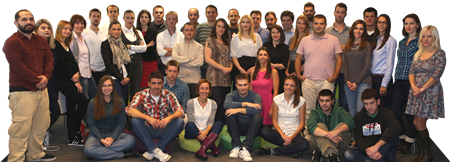The London building world of the eighteen-sixties
| Cena: |
| Želi ovaj predmet: | 2 |
| Stanje: | Polovan bez oštećenja |
| Garancija: | Ne |
| Isporuka: | Pošta Post Express Lično preuzimanje |
| Plaćanje: | Tekući račun (pre slanja) Pouzećem Lično |
| Grad: |
Beograd-Čukarica, Beograd-Čukarica |
ISBN: Ostalo
Godina izdanja: Ostalo
Oblast: Arhitektura
Jezik: Engleski
Autor: Strani
The London building world of the eighteen-sixties (Walter Neurath memorial lecture, no. 5)
Thames and Hudson, London, 1973. godine na 60. strana, u tvrdom povezu, ilustrovano.
Knjiga je odlicno ocuvana, kao nova.
Because of his anti-Nazi publishing activities, Neurath was soon on the Gestapo lists and, after several near misses and a period in hiding, managed to escape to England on 1 June 1938, taking with him his second wife, Marianne. His sponsor for entry into England as an alien was Frances Margesson, wife of Captain (later Viscount) Margesson; the Neuraths stayed with the Margessons at Boddington, near Rugby, for some five years and their son Thomas was born there. Neurath was offered work by a company called Adprint, run by a fellow refugee, Wolfgang Foges. He soon became the production manager designing and producing the successful King Penguin series, effectively Penguin`s first hardcover books. Neurath went on to develop a more ambitious series called Britain in Pictures, edited by Walter J. Turner in which the illustrations were an integral part of a book, prominently placed together with the words to which they were related, rather than banishing them to the plates section elsewhere the book. The series combined skilful picture research with fine design and printing including significant texts from George Orwell (The English People), Rose Macaulay (Life among the English), John Piper (British Romantic Artists), Michael Ayrton (British Drawings), and Jacquetta Hawkes (Early Britain); the series eventually comprised more than 100 volumes.
Neurath was not yet a naturalised British citizen and was dispatched to an internment camp on the Isle of Man, alongside musicians later to become the Amadeus Quartet and other distinguished and blameless European artists and intellectuals viewed as enemy aliens. Happily, aware that the Britain in Pictures series had considerable propaganda value, a friendly civil servant, Richard Cowell, managed to get Neurath released rapidly and he was soon back at work, with eventual naturalization as a British subject to follow.
After the war Neurath stayed with Adprint until September 1949 when he founded Thames and Hudson, contributing his life savings of £3000 to the new company`s total capital of £7,000. His co-directors included his Adprint colleague Eva Feuchtwang, the printer John Jarrold and the process engraver Wilfrid Gilchrist. The publishing house was named after the rivers of London and New York, Thames and Hudson, to signify its ambition to publish on both sides of the Atlantic. However, the point was frequently missed in the business world and letters addressed to Mr Thames and Mr Hudson were often received.
Thames and Hudson went on to become one of the most important publishing houses in Europe over the next two decades, by publishing art books at readily affordable prices and being the first to foresee the rise of the quality original paperback. Its World of Art series in paperback fitted student budgets, and the best titles in the series, such as Michael Levey`s From Giotto to Cézanne (1962), which had over 500 colour illustrations, went on student reading lists all over the world, in as many as twenty languages, and sold by the hundred thousand, having a powerful an impact on international art education.
Ako osoba nije iz Beograda, knjigu saljem postom kao preporucenu tiskovinu o trosak kupca. Slanje Post Express-om je takodje izvodljivo uz pristanak kupca na njihove uslove.Licno preuzimanje u centru uz dogovor.
Ne saljem van Srbije.
Zbog visoke cene provizije post expresa predlazem da prethodno uplatite novac na ziro racun, dok cu vam knjigu poslati post expresom kome cete platiti samo postarinu.
Sada je prosecna postarina post expresa 500 dinara pa navise.
Postarina postom kao tiskovina je oko 240 dinara.
Predmet: 67408073











